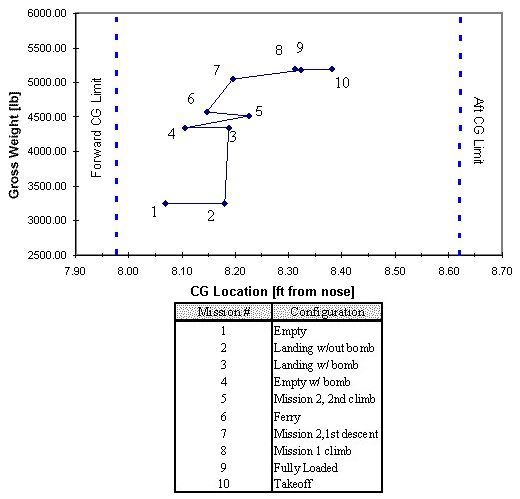|
||||||||||
|
|
||||||||||
|
||||||||||
|
|
||||||||||
|
|
|
|||||||||||||||||||||||||||||||||||||||||||||||||||||||||
|
Sizing:The aero-diamond shape was selected because of its superior aerodynamic, stealth, geometry, and internal volume characteristics. After performing an initial statistically-based analysis, a GTOW of 8,000 lb was calculated. However, this estimate was based on data for manned aircraft. Since much of the equipment needed for a human pilot can be eliminated in the Storm Shadow, the design team hoped to be able to reduce the GTOW to 5,000 lb. Once actual weights for various components were found or better calculated using weight estimation equations suitably modified for an unmanned aircraft, the GTOW did indeed come very close to this mark. Very precise data were available for items such as the payload, engines, and several avionics systems. Very good approximations could be made for structural materials and fuel while the weight of some auxiliary systems had to be estimated as accurately as possible. The final results are summarized in the following table and graph.
Major Weight Groups

Weight breakdown
Center of Gravity Location:To be controllable, the CG of an aircraft must remain within an "envelope" containing the aerodynamic center. The controllable envelope of the Storm Shadow is shown below. Note that the CG of the aircraft remains within this envelope during all flight configurations.

CG envelope diagramAs shown above, the movement of the CG along the longitudinal axis is limited to about 3.5 inches. This figure also includes the effect of fuel sloshing during the climb and descent phases of missions 1 and 2. Furthermore, the figure illustrates that the Storm Shadow is controllable and stable throughout its flight with very little CG movement. |


|
Aircraft | Design | Ask Us | Shop | Search |

|
|
| About Us | Contact Us | Copyright © 1997- | |||
|
|
|||